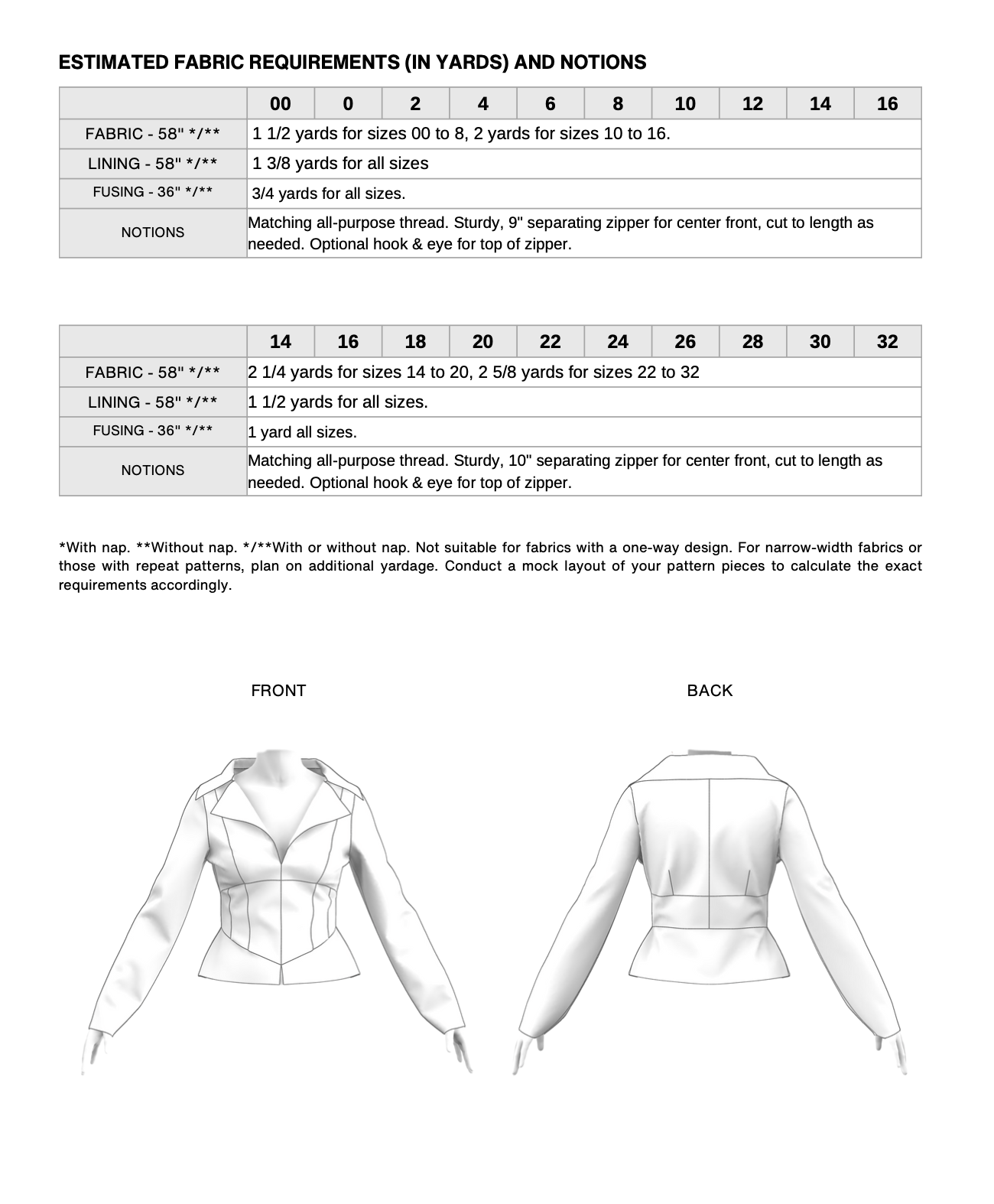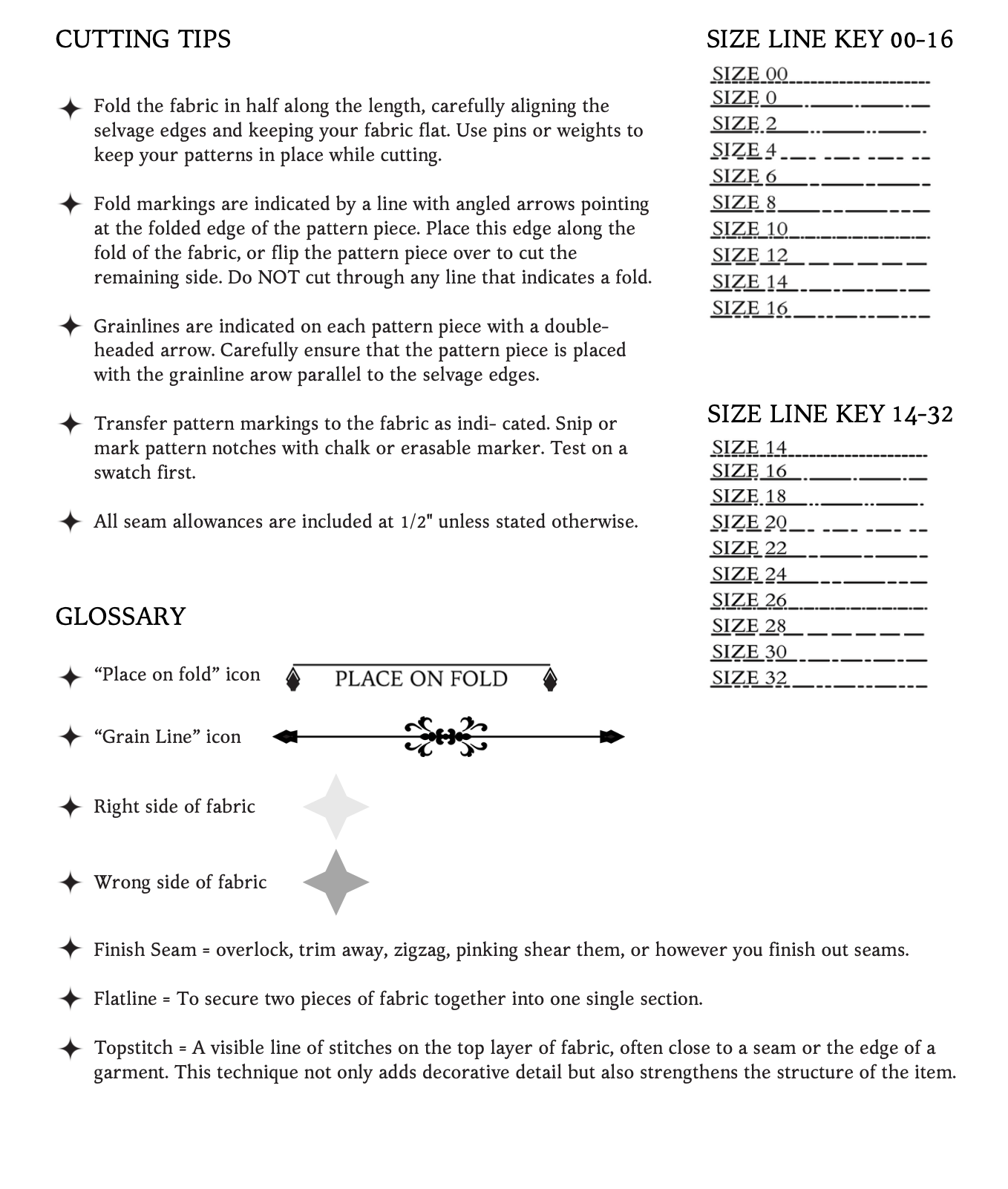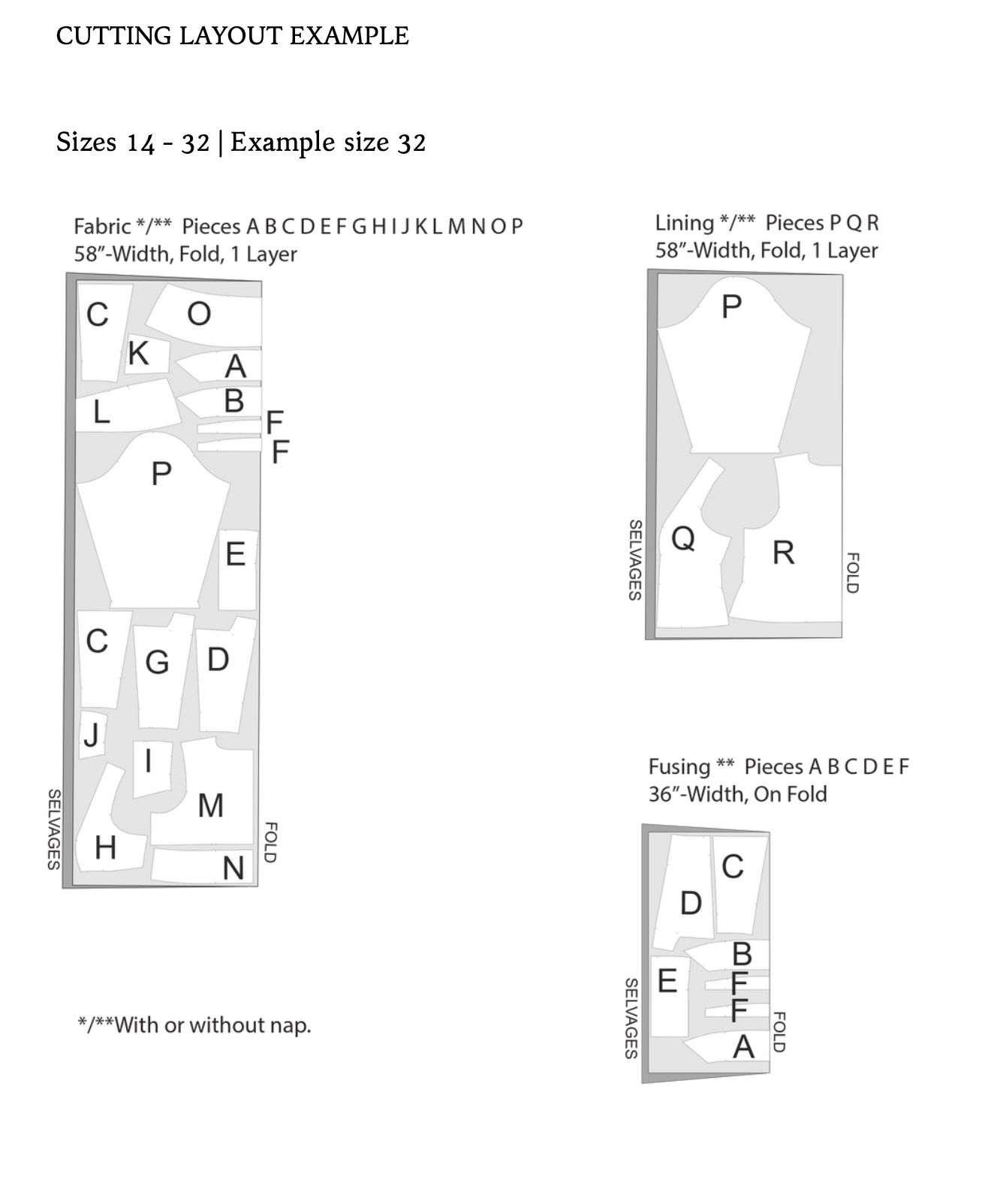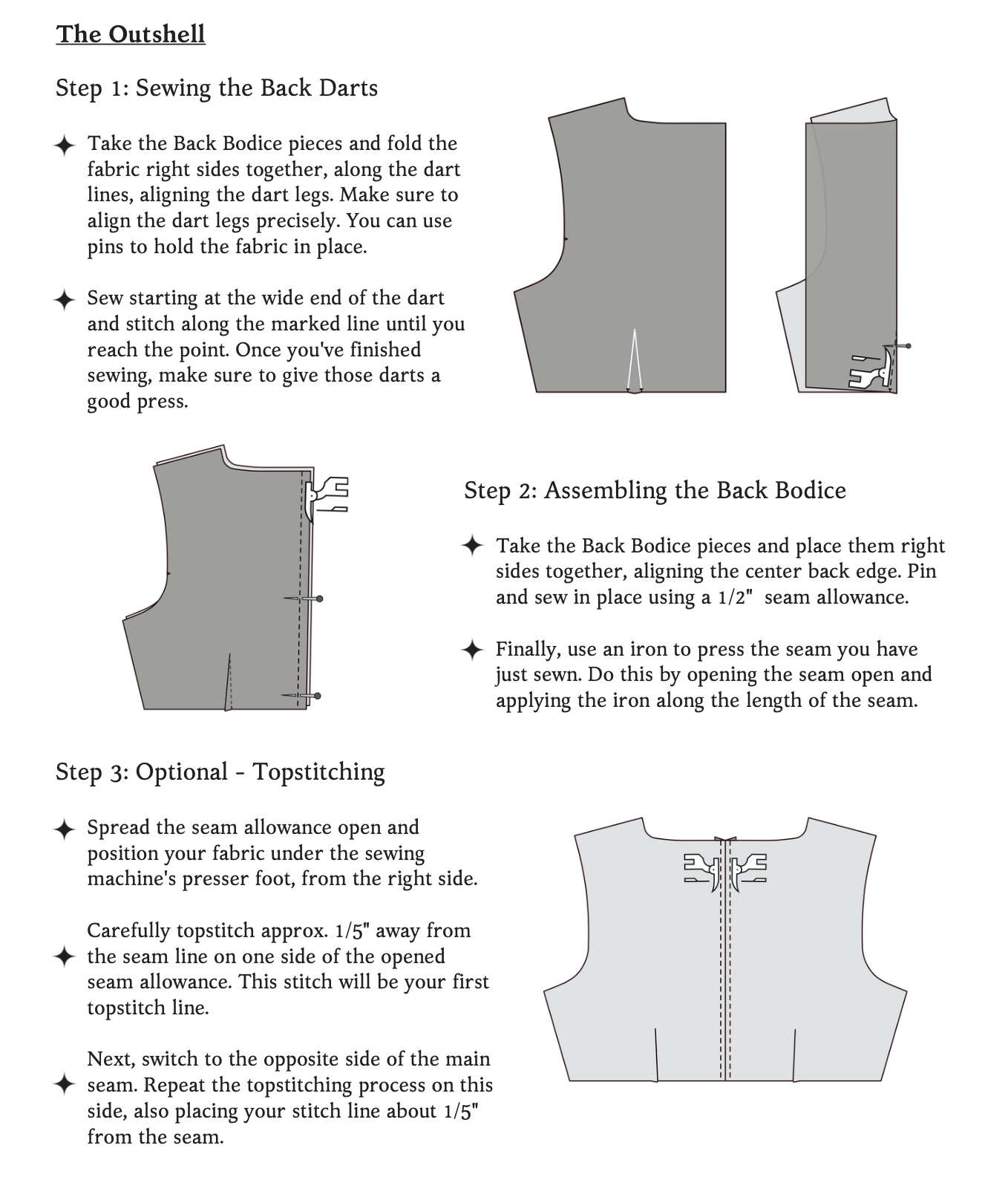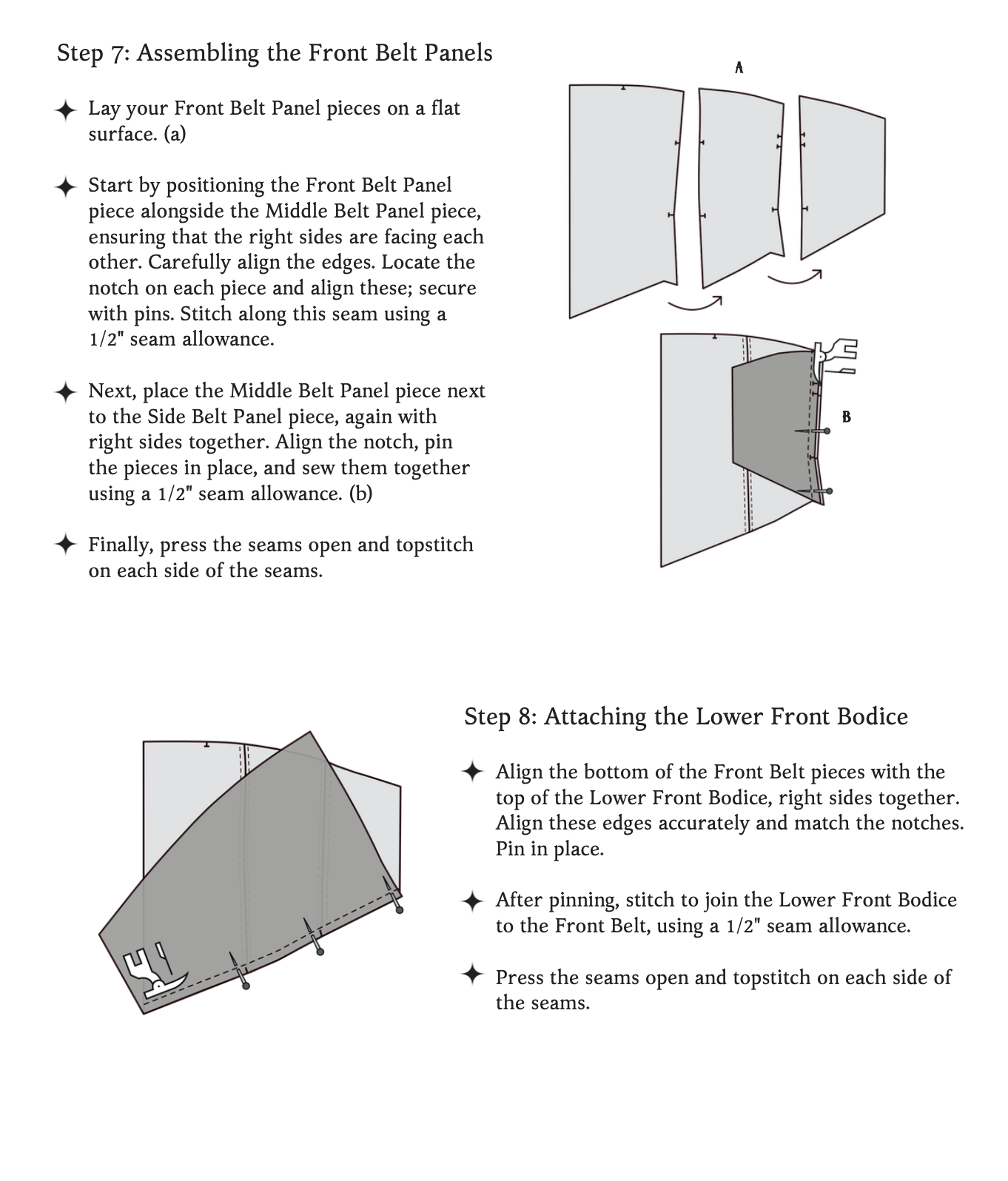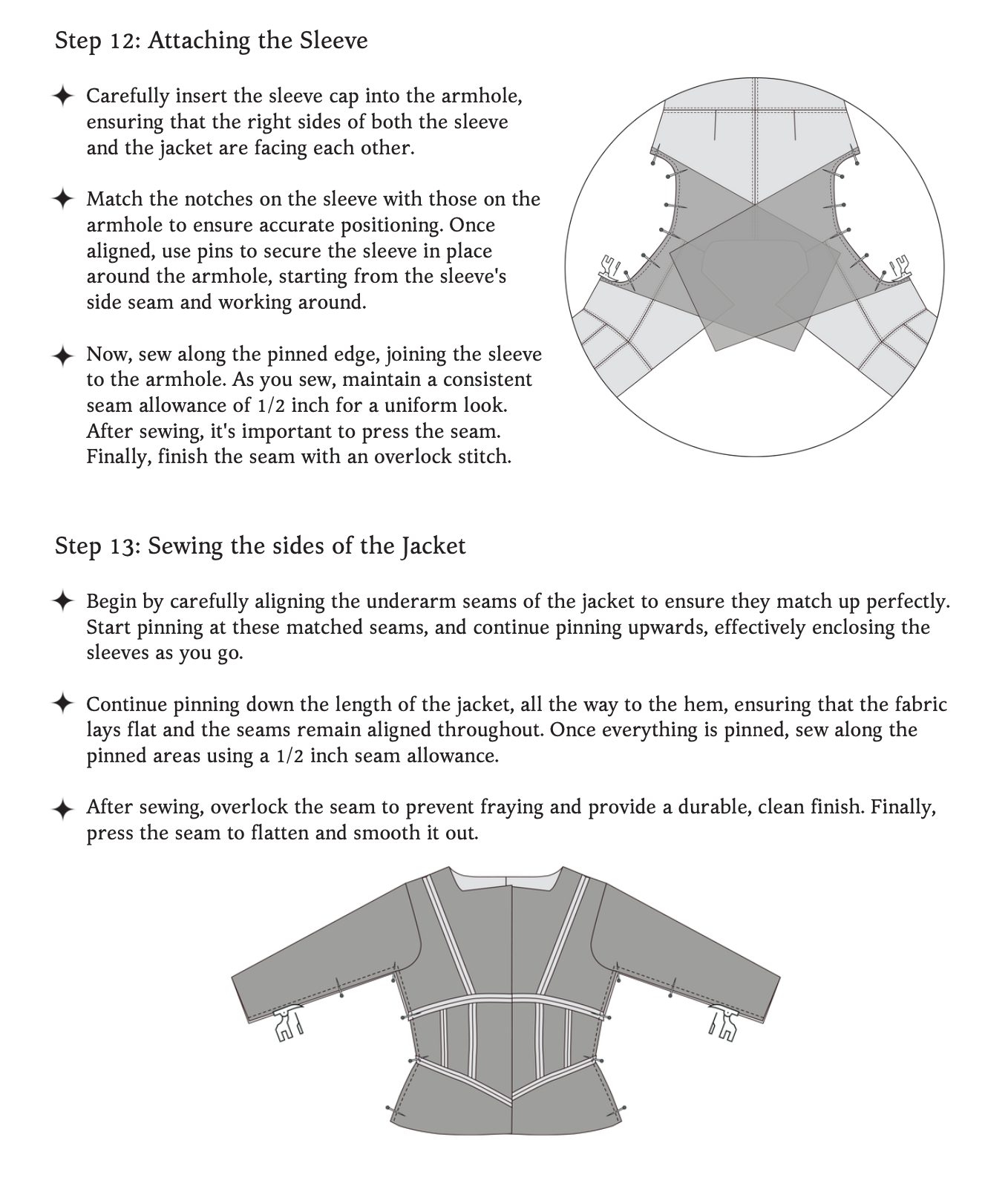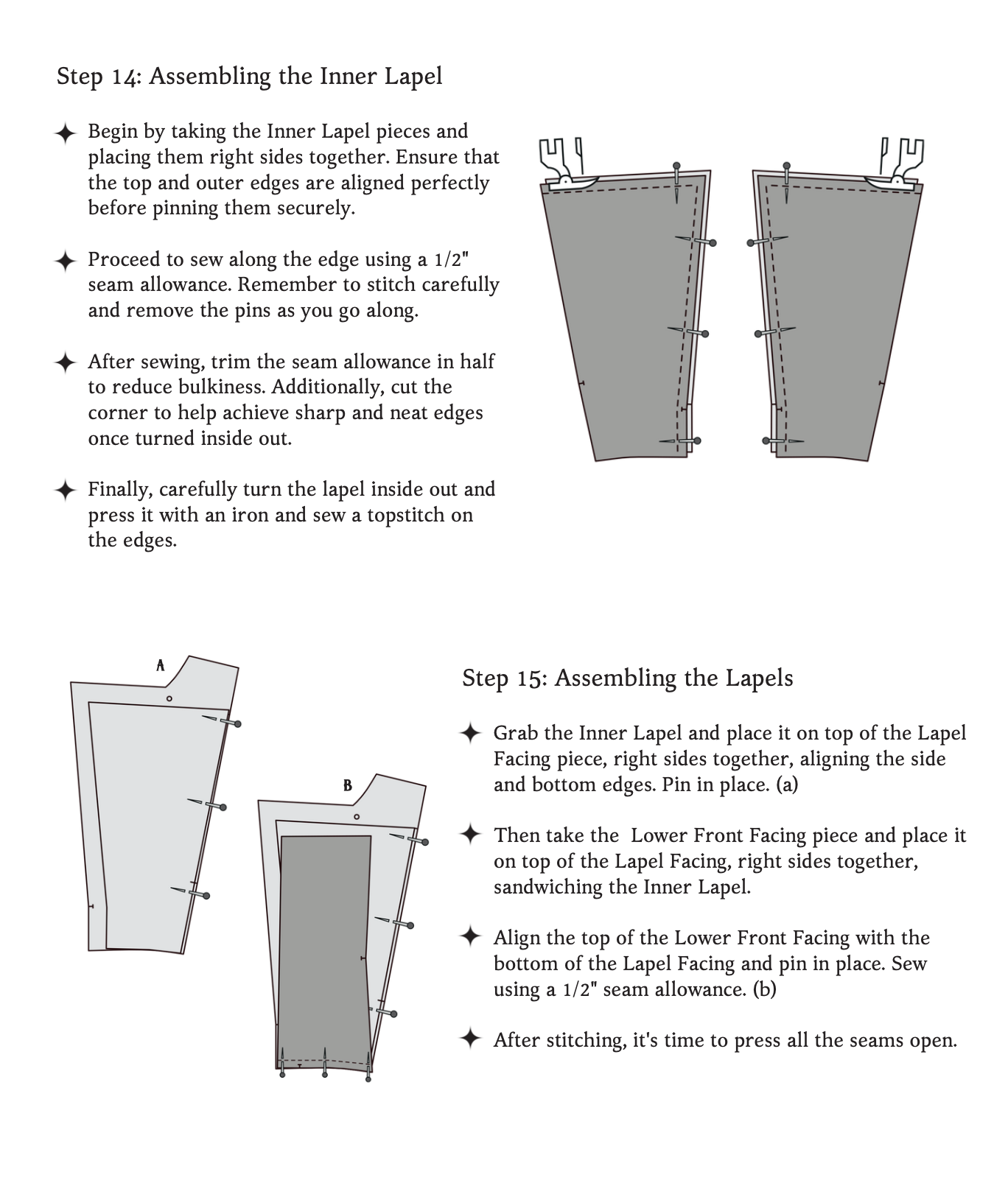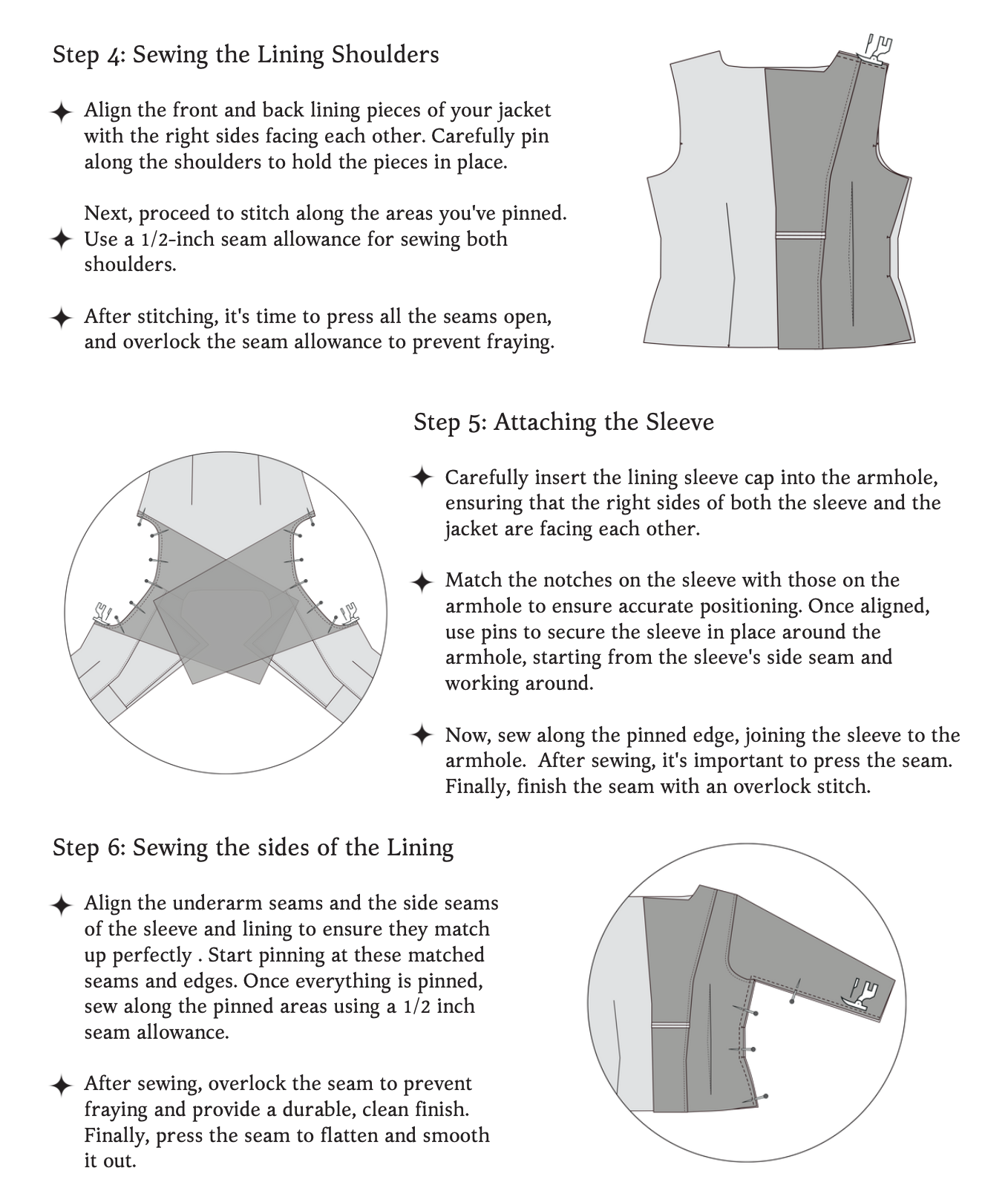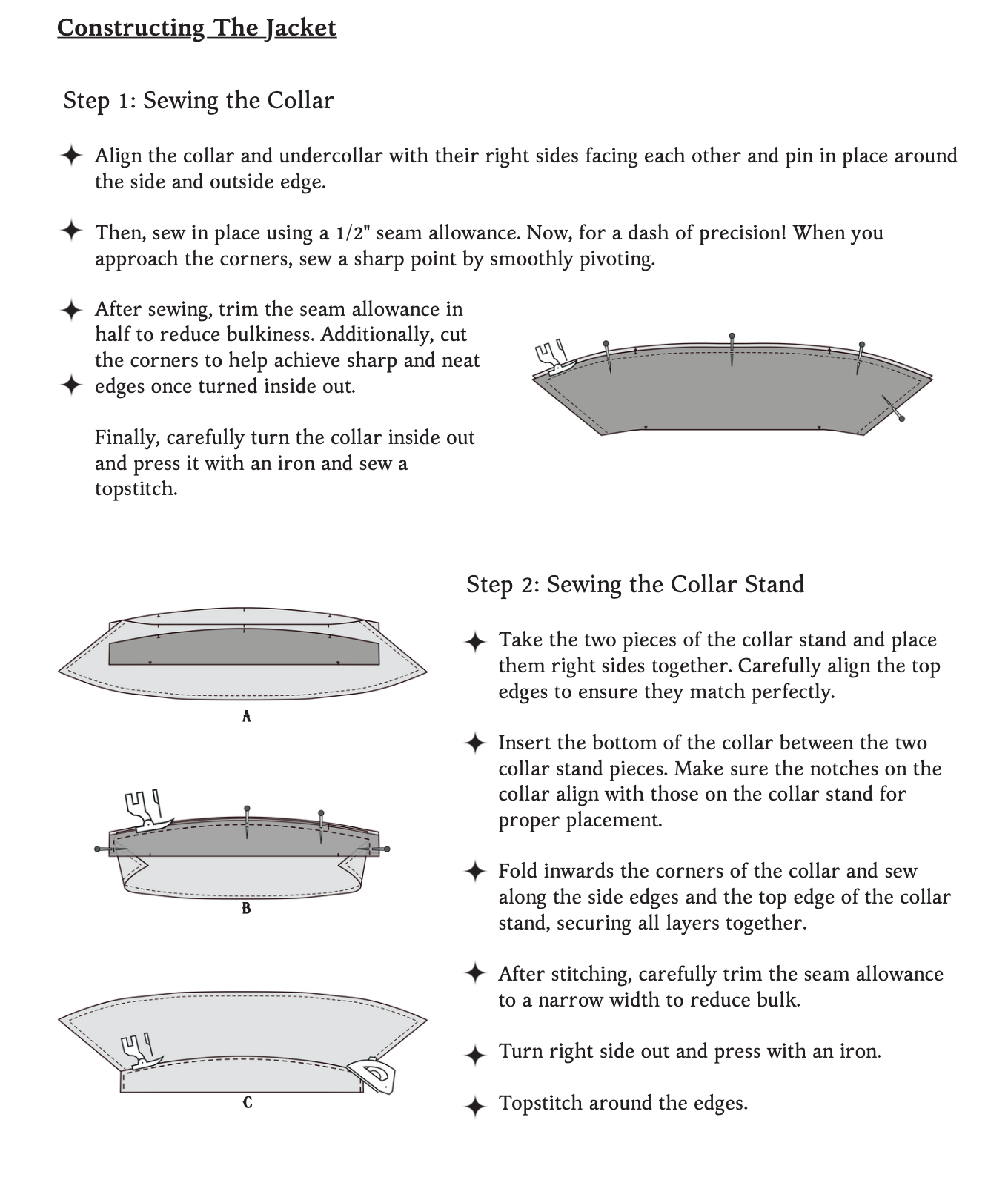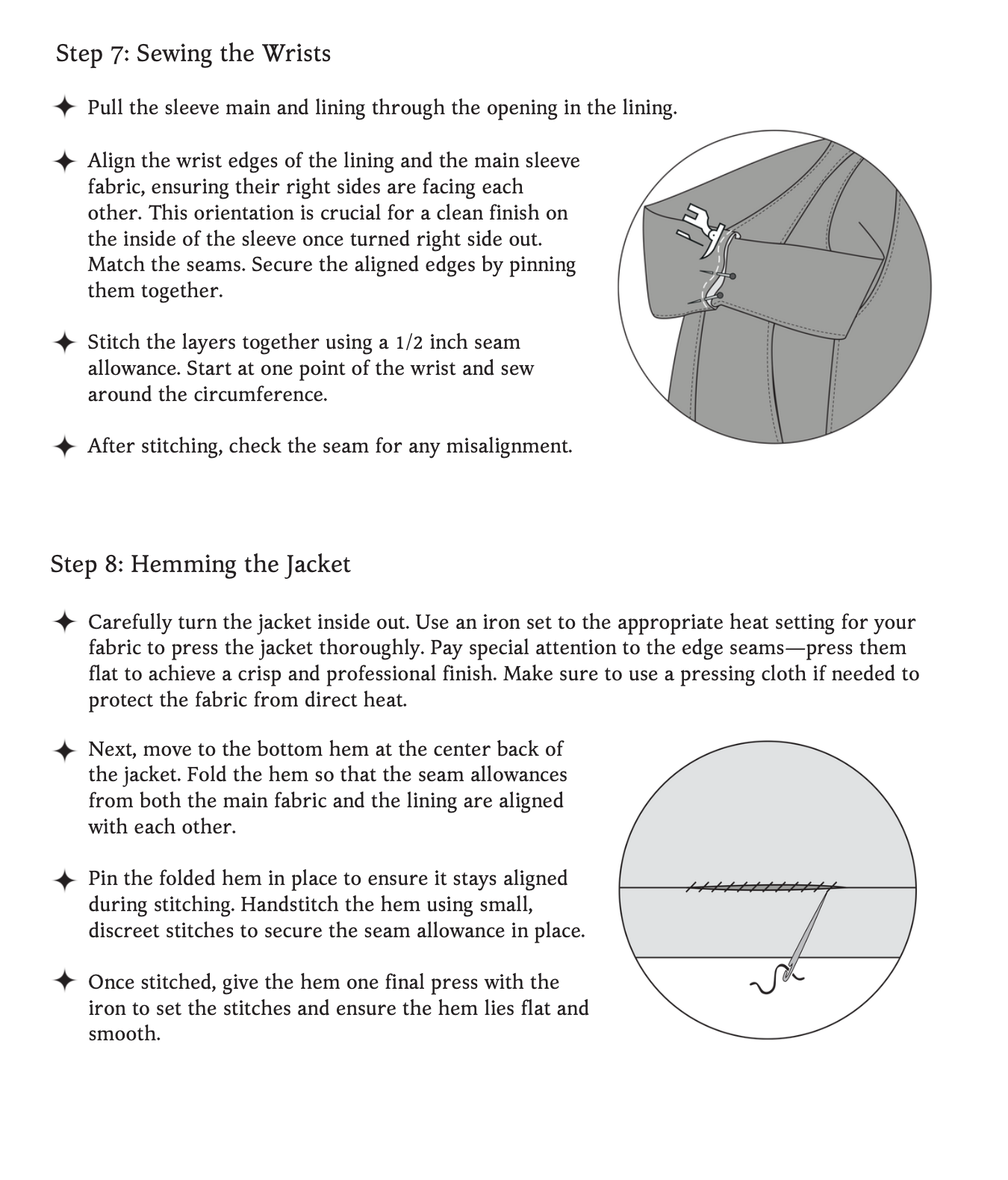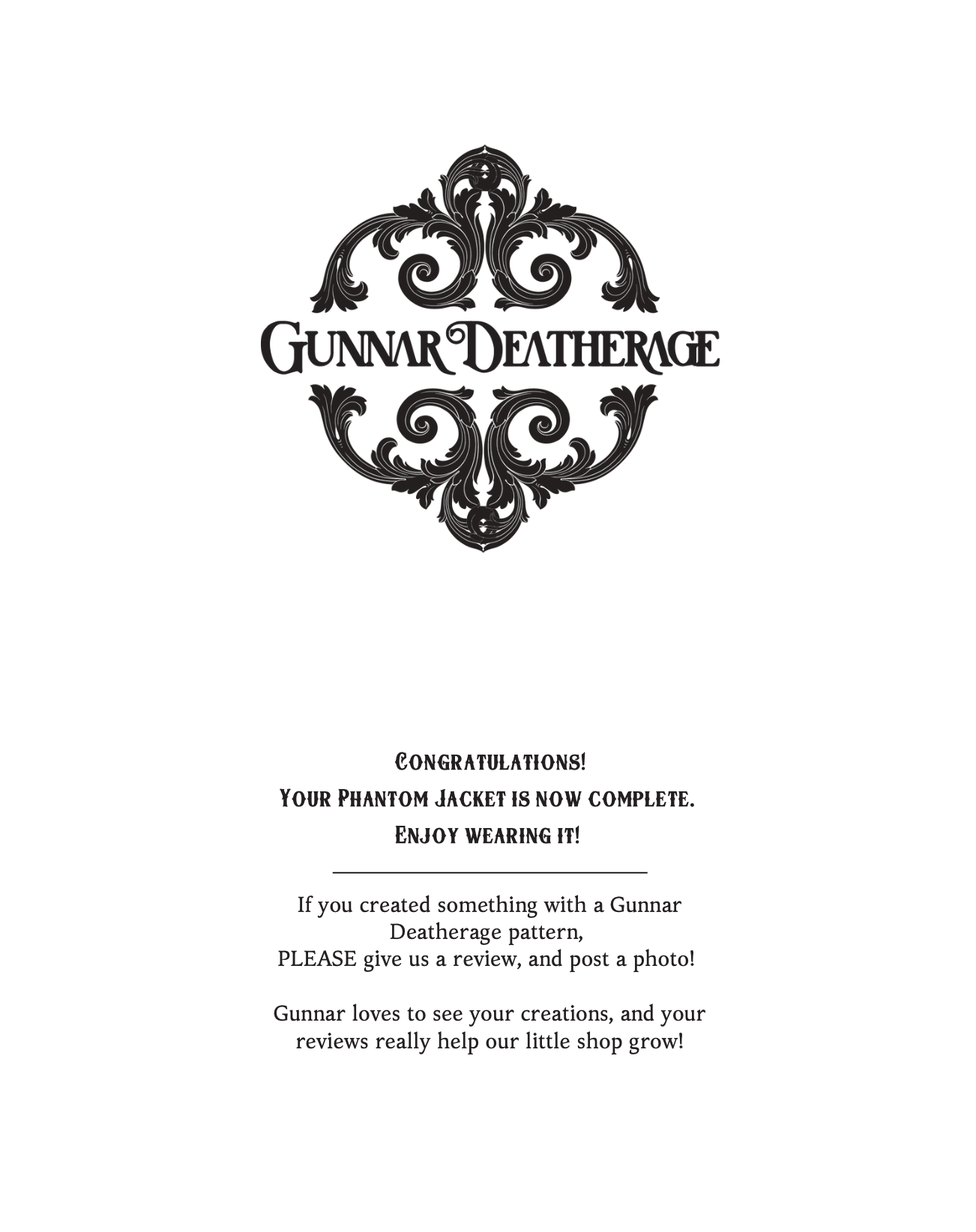The Phantom Jacket Sewing Pattern Guide

Introducing "Phantom," the ultimate jacket sewing pattern for those in between days and evenings when the air has a whisper of chill. Crafted to be your go-to transitional piece, Phantom seamlessly blends style and function, perfect for late summer nights, and the ever-shifting temperatures of fall and spring.
This pattern features a striking double lapel collar that adds a dramatic flair, and a corset-like waist to accentuate your silhouette. The central front zipper provides ease and versatility in styling, while the long sleeves offer additional warmth.
Fully lined for comfort and quality, Phantom is designed to captivate and flatter. Whether you’re stepping out for a brisk evening walk or dressing up for a casual outing, the Phantom jacket is your stylish companion through the seasons.
Before You Get Started
Please take note that the seam allowances on this pattern are 1/2” unless otherwise stated.
The Pattern will have all the notions and cutting layout you will need in the provided PDF files.
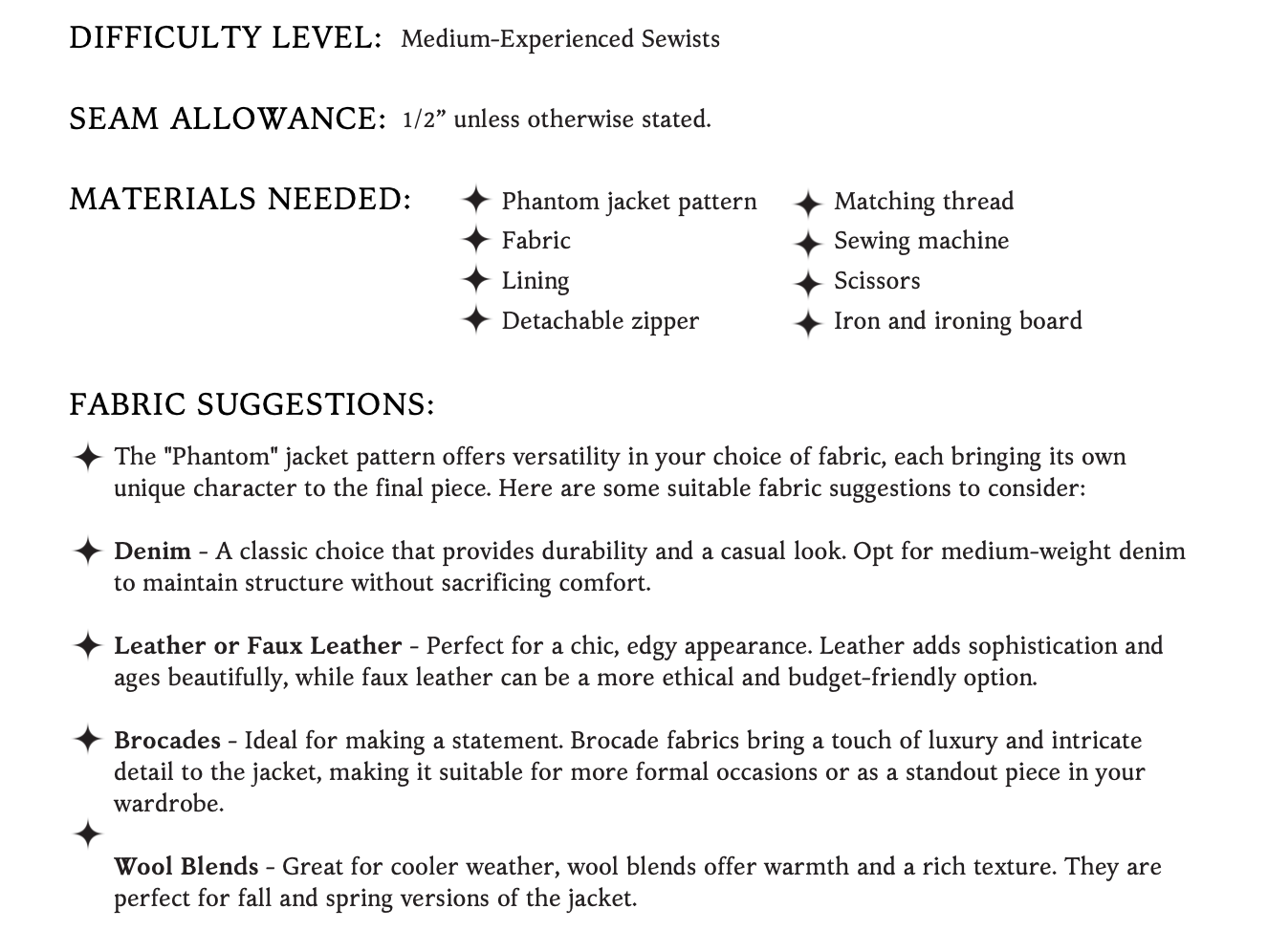
Size Charts, and Finished Garment Measurements
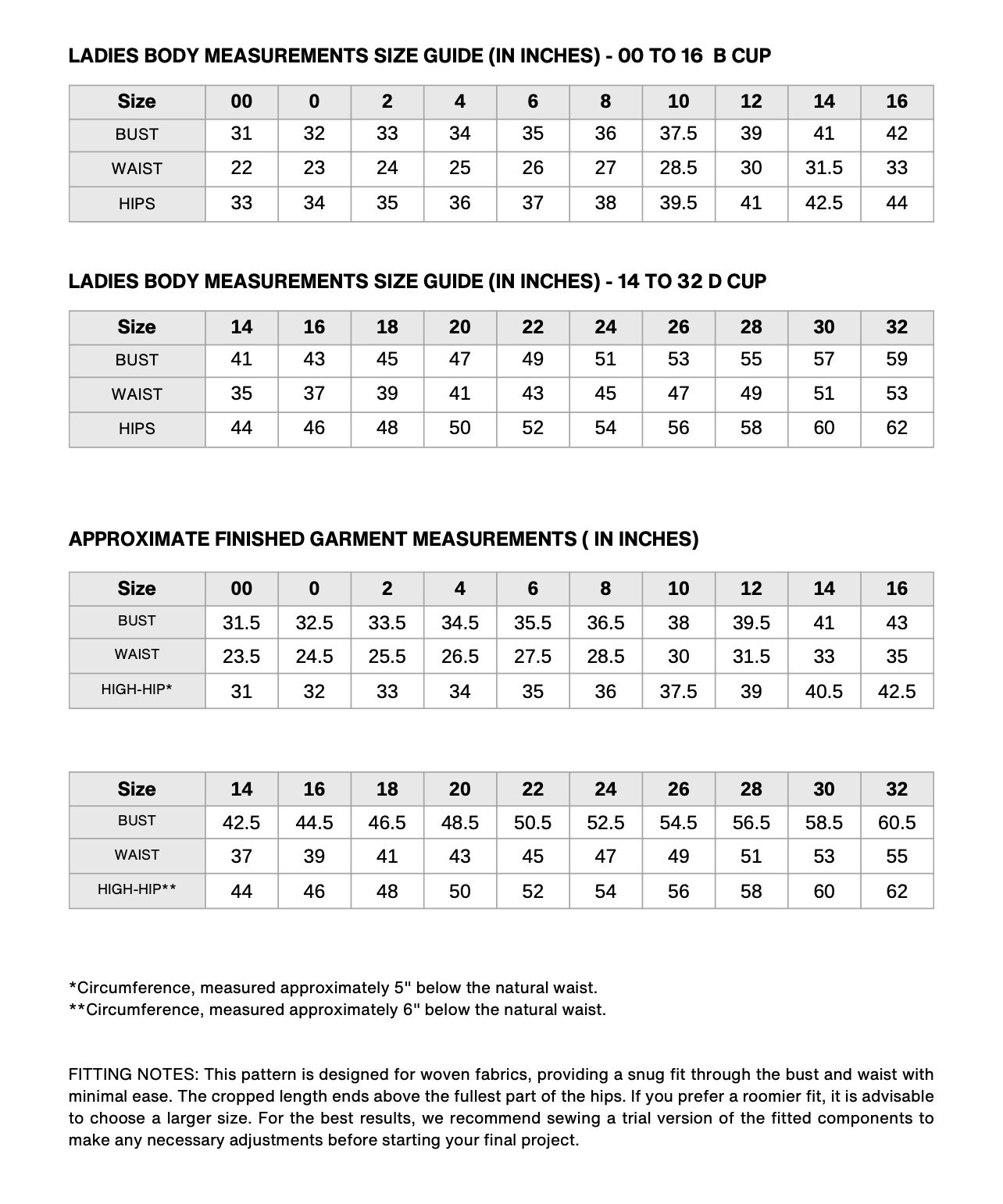
Yardage/ Fabric Consumption
